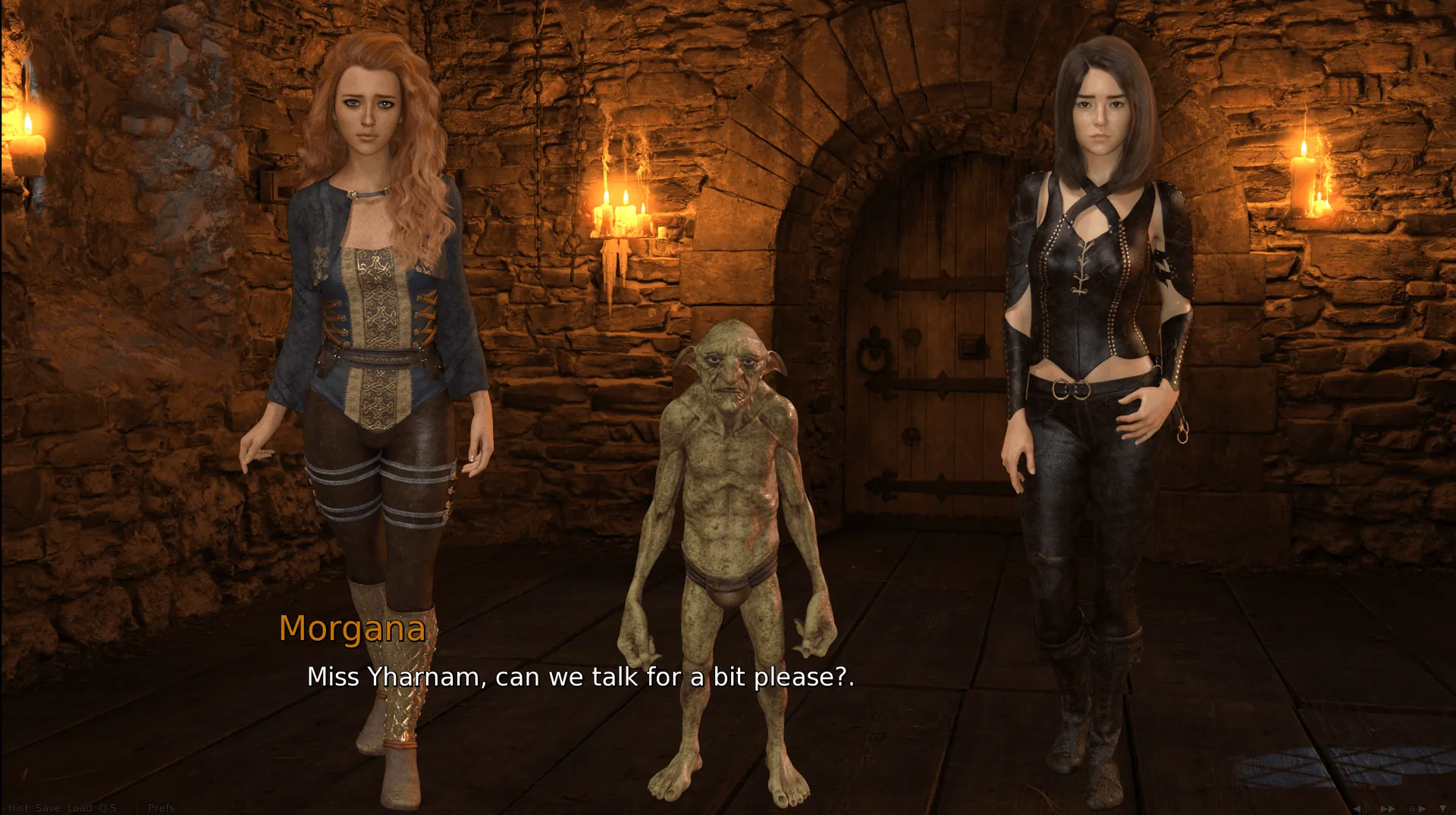
Play Come Home
Come Home review
Discover the narrative, mechanics, and secrets of the visual novel Come Home
If you’ve stumbled upon ‘Come Home,’ you’re likely curious about what makes this visual novel stand out. Unlike traditional games, ‘Come Home’ immerses you in a deeply personal story where your choices shape relationships and unlock intimate moments with a cast of memorable characters. In this guide, we’ll walk you through everything you need to know—from the emotional narrative and branching paths to practical tips for maximizing your experience. Whether you’re a newcomer or a returning player, you’ll find fresh insights and actionable advice to help you get the most out of your journey home.
What Is Come Home? Exploring the Game’s Core Experience
At its heart, Come Home is an experience that lingers with you long after you’ve closed the game. It’s not just a story you read; it’s a life you step into, a collection of fragile moments and difficult decisions that feel intensely personal. 🏡 This Come Home visual novel masterfully blends a gripping, character-driven narrative with interactive elements that place you squarely in the driver’s seat of your own emotional journey. If you’ve ever wondered what it would be like if your conversations truly shaped your reality and your relationships, this game is your answer.
A Unique Blend of Story and Interaction
So, what exactly is Come Home? On the surface, it fits the description of a Come Home visual novel—a game built on storytelling, beautiful artwork, and character dialogue. But to leave it at that would be a disservice. The Come Home gameplay elevates it beyond a passive experience. You aren’t just clicking through text; you are actively participating in the life of the protagonist, who returns to their hometown after a long absence. The air is thick with unresolved history, and every interaction is a chance to mend fences, burn bridges, or discover secrets you never knew existed. 🔍
The core loop is deceptively simple: you explore environments, engage in conversations, and make choices. Yet, the magic lies in the details. The game’s environments are rich with interactive elements that can reveal hidden backstory or trigger new dialogue options. You might find an old photograph that unlocks a poignant memory, or a forgotten item that becomes the key to understanding a character’s current state of mind.
I remember my first playthrough vividly. I decided my character would be the peacemaker, the one who smoothed everything over. I was carefully polite to Alex, a childhood friend who had become distant and guarded. I thought I was doing the right thing, avoiding conflict. Then, in a quiet moment by the lake, Alex called me out. “You’re still doing it,” they said. “Tiptoeing around me like I’m going to break. I’m not the same kid you left behind.” That moment hit me like a ton of bricks. 💔 The game had been reading my intentions, not just my dialogue selections, and reflected them back at me through a character who felt more real than many people I know. This is the power of the Come Home story; it holds up a mirror to your own behavior.
The beauty of the Come Home gameplay is how it makes you care. You become invested in these digital people because your input genuinely shapes who they are to you. This personal connection is the game’s greatest achievement.
Pro Tip: Don’t rush through environments! Click on everything. The most revealing character details are often hidden in optional examinations of objects in a room. ✨
Here’s a quick breakdown of what makes the Come Home gameplay loop so compelling:
| Gameplay Element | Its Impact on the Experience |
|---|---|
| Dialogue Choices | These are the primary drivers of the narrative. Your selections directly influence character affinity and unlock unique scenes. |
| Environmental Interaction | Exploring and clicking on objects provides crucial backstory and context, making the world feel lived-in and real. |
| Relationship Meters | While sometimes hidden, the game tracks your standing with each character, affecting their openness and the story’s direction. |
How Choices Drive the Narrative
The phrase “your choices matter” is thrown around a lot in gaming, but in Come Home, it’s the absolute, foundational truth. The principle of Come Home choices matter is woven into the very fabric of the experience. This isn’t a game with a few binary good/evil decisions at key moments. Instead, it operates on a spectrum of nuance, where even a seemingly insignificant comment about the weather can subtly alter a character’s perception of you and change the trajectory of your relationship weeks (in-game time) later. 🗺️
The narrative is a complex web of cause and effect. Choosing to spend your afternoon with one character means you miss an event with another. Standing up for a friend in an argument might earn you their loyalty while alienating someone else. The game does an exceptional job of making you feel the weight of your decisions without always signposting the consequences. You live with the results, for better or worse.
This is where the genius of Come Home character relationships shines. These aren’t simple “like” or “dislike” meters. Relationships are multidimensional. You can be a character’s trusted confidant but also a source of frustration for them. You can rekindle an old romance while simultaneously discovering a bitter secret from the past that complicates everything. The Come Home story thrives on this complexity, ensuring that no two relationships feel the same or develop in a predictable, linear fashion.
I learned the hard way that Come Home choices matter in the most heartbreaking of ways. In one playthrough, I was determined to romance Sam, the charismatic and seemingly carefree artist. I focused all my energy on them, ignoring the subtle cries for help from my more reserved friend, Riley. I got my romance with Sam, but the ending was hollow. In the final scenes, I discovered that Riley, feeling abandoned and alone, had moved away without saying goodbye, leaving a note that simply read, “I thought you, of all people, would have noticed.” I had to put the game down for a while after that. The game had given me exactly what I asked for, but it also showed me the cost. 😢 This is the emotional core of the Come Home visual novel—it makes you accountable.
The structure ensures incredible Come Home replay value. You are constantly wondering, “What if I had said this?” or “What would have happened if I had gone to that place instead?” This isn’t just about seeing a different ending screen; it’s about exploring entirely different facets of the characters and the town’s secrets.
The Emotional Impact of Player Agency
Player agency in Come Home is more than a mechanic; it’s the source of the game’s profound emotional resonance. Because you are the one making the decisions, the joy, regret, heartbreak, and relief you feel are uniquely your own. You aren’t watching a character make a stupid decision in a movie; you are the one who made that decision, for reasons that felt right at the time. This creates a powerful, personal connection to the Come Home story that is rare in any medium. 🤝
This agency is powered by the game’s sophisticated Come Home narrative branching. Think of the plot not as a straight line with a few detours, but as a sprawling tree with deep roots and countless branches. Early conversations lay the groundwork for narrative paths that may not become available until much later. Your actions determine which branches you can even access, making each playthrough a unique exploration of the game’s world and its inhabitants.
The Come Home replay value is, therefore, immense and deeply rewarding. Your second or third time through isn’t a chore; it’s a new adventure. You approach characters with different attitudes, pursue different Come Home character relationships, and uncover plot threads you never knew existed. Maybe this time you’ll uncover the mystery behind the abandoned house on the hill, or finally learn why two former best friends now refuse to speak to each other. The game is packed with these secrets, and they are only revealed to those who are willing to explore every possible narrative branch. 🌳
My most rewarding experience was on my third playthrough. I had seen a bittersweet romance and a lonely ending. This time, I played as a mediator, someone who actively tried to heal the rifts between the entire friend group. It was the most challenging route, requiring careful balancing of conversations and choices. But the payoff was incredible—a final group scene where everyone, despite their differences, came together, laughing and sharing stories under the stars. It felt like a genuine achievement, an ending I had earned through empathy and effort. The sense of fulfillment was overwhelming. 🥲
This is the ultimate lesson of Come Home: your presence and your choices have weight. You can be a force for healing or for fracture. You can leave things better than you found them, or you can reopen old wounds. The Come Home visual novel gives you that responsibility and, in doing so, creates one of the most memorable and emotionally authentic experiences in interactive storytelling. The journey is yours to define, and every path is worth walking.
Come Home offers a rare blend of emotional depth, player agency, and intimate storytelling that sets it apart in the world of visual novels. By focusing on meaningful choices, rich character development, and hidden layers of content, the game invites you to explore connections in ways that feel personal and rewarding. Whether you’re drawn to its narrative complexity or the thrill of discovering every secret scene, there’s always something new to uncover. Ready to start your journey? Dive in, make your choices, and see where the story takes you—you might just find yourself coming back for more.

































